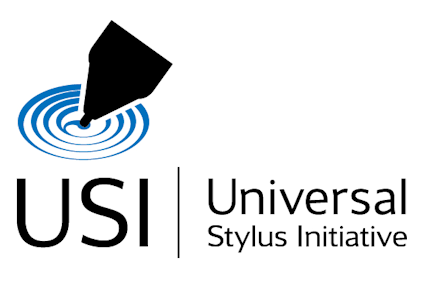We reported on the Universal Stylus Initiative several times at the beginning of this year around CES and MWC. Now the USI has released the USI 1.0 specification which was developed by a group of more than 30 companies, globally. The aim of the standard is to enable compatibility between different makes and types of stylus and pen.
The specification defines a standard signaling mechanism and communication protocol between a stylus and a touch-enabled device. The 1.0 Specification features a two-way protocol designed to offer a wide set of base features including multiple, simultaneous styluses as well as extensibility for per-vendor customization and future usages.
Users will be able to use a single USI stylus across all of their USI-enabled devices and any USI stylus shipped with devices will work with other USI-enabled devices, even those from different manufacturers. Additionally, the USI 1.0 Specification also provides the capability to use multiple styluses from different manufacturers on a single device. This is claimed as an industry-first enabled by the USI 1.0 Specification.
The standard has a minumum base level resolution of 150dpi and 4096 pressure levels are supported.
A compliance and testing programme will be launched.

Analyst Comment
We believe in the aphorism that “standards make markets” and the idea of USI is to make stylus use as interoperable as USB keyboards and mice. I have a Wacom tablet myself, but am always misplacing the stylus – in fact, I’m not sure where it is now (and I haven’t got around to installing the drivers in my recent PC, yet). Styluses need to be as easy to use and disposable as pens and pencils (and almost as cheap) if they are to become pervasive, I think.
The biggest question about the standard is that Apple, Samsung and Microsoft are not part of the group, although it has been supported by Atmel, Dell, Hanvon, Intel, Lenovo, Sharp and Wacom.

